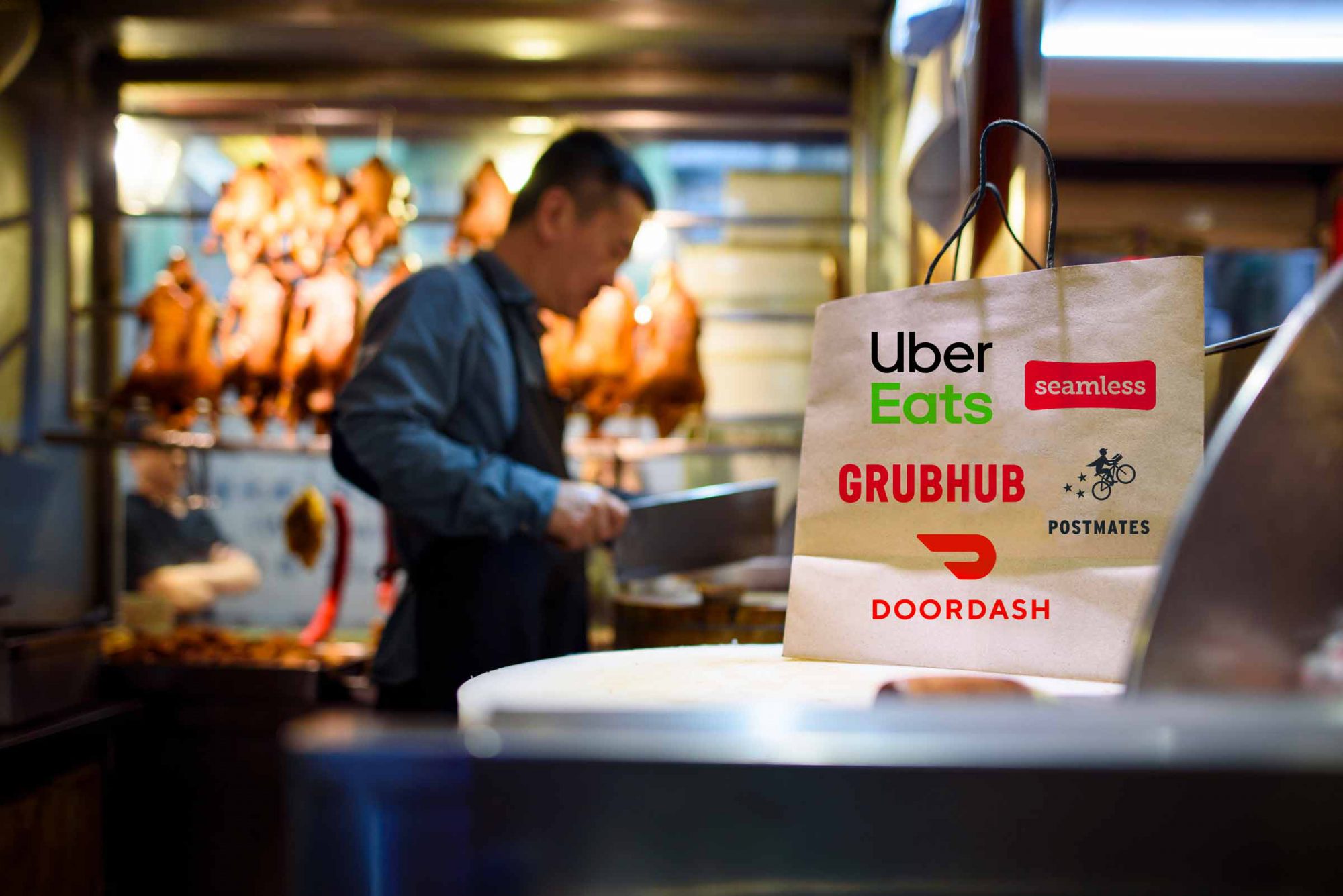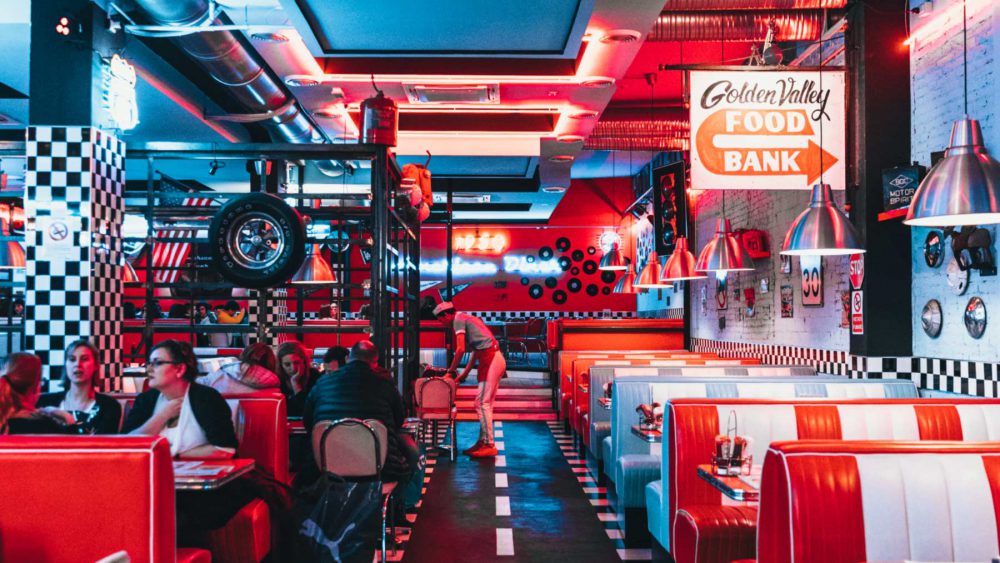What is a Ghost Kitchen?
October 2, 2019
Jeremy Wells
A ghost kitchen, also known as a ghost restaurant, a virtual restaurant, or a cloud restaurant, is a food business that exists solely to provide delivery. In these restaurants, food is intended for off-premise dining only.
In a typical ghost restaurant model, the food is made in a rented kitchen, while being ordered and delivered through a third-party delivery service.
Ghost kitchens are often found in high-rent areas, like college towns. Instead of drawing in foot traffic, virtual restaurants work well anywhere as long as their delivery service can easily access customers.
Ghost kitchens are a fairly new concept, although some pizza places have already had carry-out and delivery-only options for years, however, they still maintain a brick-and-mortar location, which ghost restaurants do not.
Why are Ghost Kitchens Gaining Popularity?
In most cities, the restaurant business is already incredibly cutthroat, meaning there is very little room for new players. Delivery is also increasing in popularity because customers want convenience.
In fact, in many areas, restaurants that don’t offer delivery are closing down.
Many traditional restaurants, start-ups, chains, and third-party delivery services are looking into ghost kitchens as a way to manage the demand for delivery while increasing market share.
How Do Ghost Kitchens Work?
Ghost restaurants typically operate through a third-party delivery platform.
From the customer’s perspective, he or she finds a restaurant to order from after browsing through a favorite third-party delivery app, such as GrubHub, UberEats, or DoorDash.
The customer places an order and receives the delivered food from the third-party vendor.
From the restaurant’s perspective, the restaurant receives the order and fulfills it in a kitchen that does not offer a storefront. It then hands the order off to the delivery partner.
The Pros of a Ghost Kitchen
There are many pros to the ghost kitchen model. The first is that the ghost kitchen model reduces the need for start-up costs and resources. This allows new players to enter the restaurant scene in a given location without as much of a barrier to entry.
For example, if one is attempting to open a food truck, there is a cost to secure a truck and procure the right kitchen equipment for the truck.
This also opens up more opportunities to experiment. If one model fails, it is fairly inexpensive to switch gears and try something different.
Ghost kitchens also do not require new restaurants to compete over high-traffic locations, since customers do not visit the location itself. This also means that these restaurants aren’t renting dining space that isn’t being utilized.
Another benefit is that the ghost kitchen model does not require an existing customer base. Your restaurant will find hungry customers through a third-party platform.
Ghost kitchens also have fewer overhead costs because the kitchen is rented. There can also be reduced labor costs because the only staff required is the kitchen staff.
Unlike a food truck or a traditional restaurant, there is also less variability based on the weather. A restaurant with a separated parking lot or a food truck may experience a decrease in sales if the weather is poor.
The Cons of a Ghost Kitchen
The biggest problem with a ghost kitchen is that these restaurants often have to pay a high fee to third-party delivery services, sometimes as high as 30%. There can also be additional costs associated with premium placements on the third-party vendor’s site or app.
Another factor against ghost kitchens is that they don’t have that brick-and-mortar or truck for visibility and brand recognition. This is why digital branding even more important for Ghost Kitchens.
It can also be a bit more challenging for these types of restaurants to receive licensing, especially if your business is the first of its kind in the area. Inspectors may not be used to this type of business model and maybe more reluctant to license the business.
Location can be a negative factor for kitchen staff and business owners because rentable kitchens are not always in the most easily-accessed locations.
Lastly, because it is such a new model, it is a major risk.
Getting Started with a Ghost Kitchen
If a ghost kitchen sounds like a venture you’re interested in trying, there are a few key steps you’ll need to take. There’s a lot that needs to be considered when opening a new restaurant, even a ghost kitchen.
Gain access to rentable commercial kitchen space
What many new-to-restaurant-owning entrepreneurs fail to realize is that food that is sold to consumers must be produced in a licensed commercial kitchen. This isn’t the major hurdle it once was as there are now many shared-use kitchens or commercial kitchens you can rent by the hour, day, or month. Think of this as a coworking space for chefs, caterers, food trucks, and other food producers without traditional kitchen spaces.
You’ll need to gain access to a rentable commercial kitchen in your area before you begin. Prepare for a somewhat lengthy process when it comes to starting out, as the kitchen will want to vet you and your business before agreeing to rent to you.
Apply for inspection
Once you’ve locked down your kitchen, you’ll need to apply for your inspection with the health department. Many health departments will need to visit you in the commercial kitchen space before you start selling your food.
When the health inspector comes for the inspection, they will want to see your production methods, food storage areas, and general flows. You will also need to have these written out for your final inspection and to receive your license, so it is best if you can provide that to the health inspector when they visit as well.
The most important thing to communicate with your inspector during your inspection is that you are producing food safely and legally. Walk them through your menu, your production process, how you plan to hold time and temperature, and what third-party service providers you plan to use. This includes any national or local food distributors and suppliers, as well as your delivery service.
Select your third-party service provider
There are many third-party service providers to choose from. Tech-enabled ordering platforms will charge you a fee in exchange for providing one of the most critical aspects of your business – so you need to choose wisely.
When looking at providers, you should find out what your options are and evaluate them based on the average delivery times, reliability, and customer service. Look at their customer reviews and interview your top contenders. This should be a partnership, and it will be an incredibly painful process if you select the wrong vendor.
Sometimes these delivery services charge a painful commission fee – as much as 30% of the order. However, it is still going to be considerably less cost than trying to deliver yourself, and your customers will be able to find you through their platform, instead of you having to find all of your customers through your own marketing efforts.
Plan for delivery
One of the biggest cons for chain restaurants who are starting to offer delivery is that their food is not made for that type of distribution. It doesn’t hold up well to being transported.
As you plan out your menu, make sure your food is temperature-controlled and holds up well to travel. You don’t want your food to arrive cold, soggy, or overly messy. If it does, you’re almost guaranteed to lose customers quickly.
As you think about your menu, keep it simple – especially to start. Consider reusing the same ingredients in different ways to keep costs down.
You’ll also want to train your staff to make sure quality is consistent.
Have a loyalty plan in place
Loyalty is critical for the success of any local operation – especially food service. Check with your third-party delivery provider for the ability to add a loyalty program or coupon codes. Then you can distribute these codes to your customers when their orders are delivered.
Loyalty is critical for the success of any local operation – especially food service.
You can also build up loyalty on your social platforms. Perhaps run a contest for customers who post pictures of your food where they can earn a discount on their next order. Contest or not, be sure to reward customers for formally reviewing your business or even sharing it on social media. Word of mouth and referrals are just as critical to your ghost restaurant’s success as loyal customers are, if not more so.
Identify your niche
Again, this applies to nearly any type of restaurant, not just ghost kitchens. You need to have a niche – whether that means you are appealing to an underrepresented demographic in your area (like working parents or the elderly) or filling a void for a specific type of food (Thai in a city that does not have many Thai restaurants, for example.)
If you’re feeling stuck, have conversations. Chances are, your friends, neighbors, and relatives have ideas for what they “wish they could have” in your area. Once you come up with a concept, test it conversationally as well. One person’s opinion may not mesh with the overall landscape.
Digital branding is king
Since you don’t have a brick and mortar or a truck for customers to immediately identify with, you will need a strong online brand. You might even consider hiring a marketing consultant or firm to help you get started if this isn’t something you are already familiar with.
Since you don’t have a brick and mortar or a truck for customers to immediately identify with, you will need a strong online brand.
One of the most important brand components is a strong name. Make sure it isn’t too similar to another restaurant in your area, and it should also align with your menu and the type of cuisine you offer. If “Buckey’s Burger Palace” only sells tacos, that is probably not a model that will be set up for success.
You’ll also need a solid website. Make sure your site looks professional, and functions well. Include a lot of pictures of your food, and a unique logo that is clear to read.
A strong social media presence is also critical. Facebook, Instagram, and Snapchat are the most common platforms for food companies and restaurants to connect directly with customers. Again, make sure your social media accounts have a lot of high-quality pictures of your food so that these channels showcase what you have to offer.
Make sure your website and your social media channels direct your potential customers to order from your chosen third-party vendor, so your potential customers can easily locate you. Because ghost kitchens are a relatively new concept, this may be a new process for your customers too, so walking them through it can set you up for success.
You should also include your menu on your website and your social media channels. This will entice customers to order from you, even if they are unfamiliar with ghost restaurants or your chosen third-party vendor.
In closing
Ghost restaurants are certainly worth considering if you’ve been interested in getting into the restaurant business but start-up costs and capital have been a barrier for you. However, you should know that as a new concept, these types of businesses are still risky and may not be immediately successful. It may also be too new in your area, and therefore you may not have access to a rentable kitchen space in your area at this time.
Be sure to choose a great name and focus a lot on your restaurant’s branding
However, if you do decide to give it a try, be sure to choose a great name and focus a lot on your restaurant’s branding. It is also critical to choose an excellent third-party ordering and delivery service.
By taking these steps, it is possible to see success through this new restaurant business model. To help ensure your new business venture is successful, it may be worth hiring a restaurant marketing agency. These types of professionals will have a much better idea for how to appeal to your target audience as well as what will be successful and what may not be.

Connect with Longitude°
Searching for a hospitality branding agency to partner with on your next project? Fill out the form below and let’s talk. Or you can email info@longitudebranding.com
Jeremy Wells
Partner at Longitude°
Jeremy is the author of Future Hospitality and Brand Strategist at Longitude°. As a member of the Education Committee for The Boutique & Lifestyle Leaders Association (BLLA) and a content contributor to Cornell University’s Hospitality Vision and Concept Design graduate program, he is a committed thought leader in hotel branding, concepting, and experience strategy.






